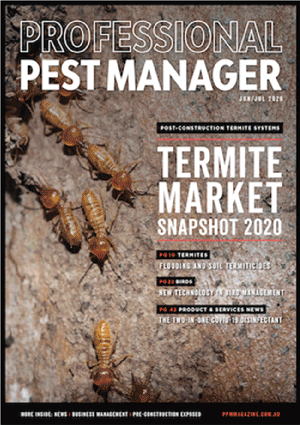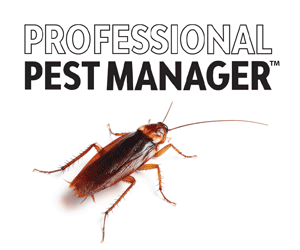Emma Mendelsohn, operations manager of Noah’s Ark Pest Control, VIC, shares a particularly interesting Coptotermes encounter faced by the team.
Simon Thornton from Noah’s Ark Pest Control, recent Victorian State Winners of the 2014 ‘Pest Manager of the Year’, has been treating a property in the inner-west of Melbourne for termites. Details of this treatment emphasise the importance of factors such as comprehensive inspections and diligence when dealing with termite infestations.
The importance of thorough inspections and diligent treatment were really highlighted in this case. The homeowner originally approached Noah’s Ark Pest Control, not with a termite problem, but with a general pest matter. They initially thought the problem could be rats, as they were experiencing flickering lights and could hear ‘clicking’ noises in the walls. Interestingly, the initial brief from the homeowner tended to indicate possums or rodents, rather than termites. In addition to this, the homeowners spoke very little English, so communication was not ideal.
In late November 2014 we inspected this property, a solid brick house on a slab, built in late 1980s. We were not specifically looking for termites, but thankfully our termite inspector had his wits about him as he immediately noticed brown marks high up on the plaster walls. Closer inspection and more discussions with the homeowner led the technician to insist that a full timber pest inspection was required to investigate what appeared to be termite ‘flight’ holes being prepared on their walls (main picture, above). Fortunately, the homeowners were from Vietnam and understood that what had appeared to them to be rodents, was actually a potentially extensive network of termite activity that looked close to releasing alates.
Upon further investigation it was evident there was an extensive Coptotermes termite colony throughout the wall cavity. Strangely, while our termite inspector was on site, some of the lights were flickering, which led him to look carefully at the electrical sockets on the affected walls. Worryingly, these sockets were full of termite mud.
On a number of levels this raises some concerns that we should always be mindful of when dealing with termites. Firstly, it is potentially dangerous where termite activity in wall cavities could impact on the safety of electrical sockets, especially if these sockets have wet mud and are not protected with safety switches. Any contact could result in a dangerous situation or even electrical shock if homeowners or technicians are not aware of these potential risks.
Following inspection, it appears that there had been a slow leak in a bathroom or shower that had, over time, attracted termites. From there they had moved through the home virtually unnoticed, except for the flickering lights and clicking noises. A huge network of mud was uncovered behind a wall cavity in this property.

It was important to establish the presence of safety switches, to ensure that the effected electrical sockets would be isolated should there be a short. All of this was communicated carefully to the customer. As an additional safety measure, they were advised not to use those sockets until treatment had been completed.
This case raises some interesting points as to the tricky and often challenging nature of termite behaviour and what is important to note when inspecting properties – in this situation, taking note of any specific or potential safety hazards!
A good termite operator will be using not just their termite identification skills, but will also need a healthy dose of problem solving ability, a trade sense and even basic building knowhow!
Information on termite inspections
Emma Mendelsohn, Operations Manager, Noah’s Ark Pest Control



